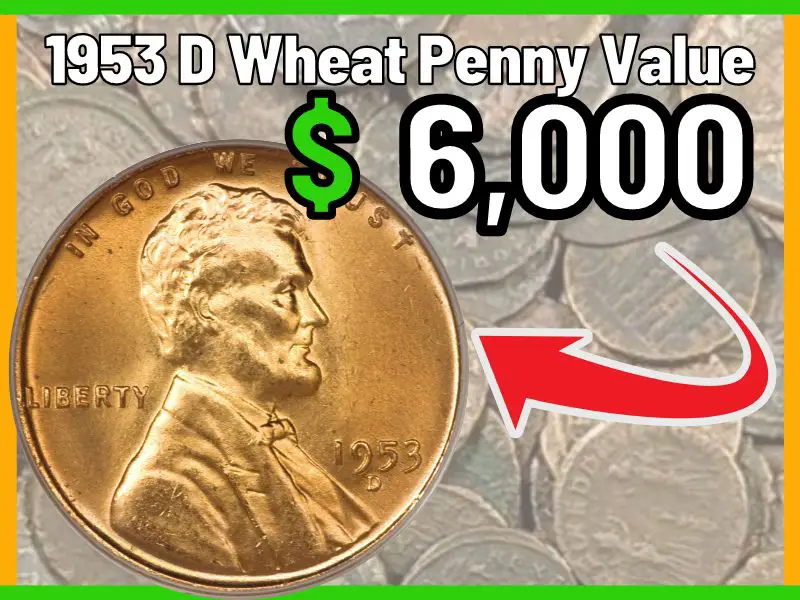
If you find a 1953 D penny in your change, it could be worth more than just one cent. The 1953 D penny value is between $0.05 and $0.22 in circulated condition, and can be worth from $2 to $64 in uncirculated condition, depending on the grade.
There are many different ways to collect coins. Some people focus on collecting coins from a specific mint, while others prefer to collect coins of a certain denomination. Some collectors even focus on collecting coins that have a certain theme or design.
We all know that a penny saved is a penny earned, but what about when your pennies are worth more than face value? Believe it or not, there are quite a few coins in circulation today that are worth more than just their copper content. And one of them is the 1953 D wheat penny. So if you’re lucky enough to have one (or more!) tucked away in your coin collection, be sure to check out this guide to find out how much it’s worth!
Introduction to 1953 D Wheat Penny
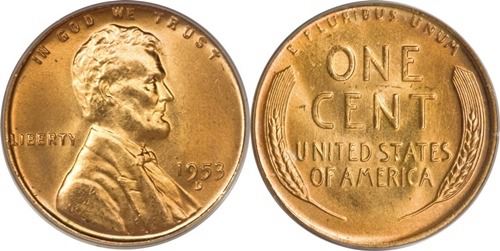
|
1953 D Wheat Penny |
|
| Year | 1936 |
| EDGE | Plain |
| DIAMETER | 19.00 millimeters |
| WEIGHT | 3.11 grams |
| METAL | 95% Copper, 5% Tin and Zinc |
| DESIGNER | Victor David Brenner |
| MINTAGE | 700,515,000 |
The 1953 D Wheat Penny is one of the most iconic coins in American history. Over 60 years ago, the coin was minted in Denver, Colorado, and released into circulation. Since then, it has become one of the most popular collector’s items.
The Lincoln penny (also known as the wheat penny) is one of the most recognizable coins in circulation today. However, this wasn’t always the case. When it was first introduced in 1909, the Lincoln penny was met with mixed reviews. Some people thought that the design was too busy, while others felt that it didn’t adequately represent Abraham Lincoln. Despite the initial criticism, the coin quickly became popular, and it has remained in production ever since.
The wheat penny was minted in three different locations: Philadelphia Mint, San Francisco Mint, and Denver. In this blog post, we’ll focus on the coins minted in the Denver Mint.
The Denver Mint is one of the United States biggest facilities for producing circulating coinage, along with the Philadelphia Mint. The Denver Mint began operations in 1906 and is located in the city of Denver, Colorado. It is also one of the largest producers of circulating coinage in the world, with over one billion coins produced each year. In addition, the Denver Mint was known for striking coins with a high degree of precision.
How Many 1953 D Wheat Pennies Are There?
The Denver Mint struck 700,515,000 pennies in 1953. That being said, they’re not exactly rare. But if you’re looking for one in pristine condition, you might have to do a bit of searching.
Even though they were minted over 60 years ago, you can still find 1953 D wheat pennies in circulation today. While most have undoubtedly been lost or damaged over the years, some of them remain in pristine condition, having never been circulated. As a result, the true number of surviving 1953 D Wheat Pennies is unknown.
1953 D Wheat Penny Identification Guide
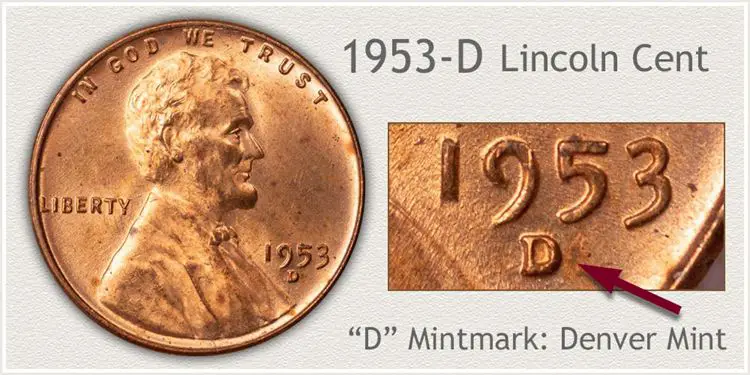
Photo: coinstudy
This penny is composed of 95% copper and 5% tin and zinc, weighs 3.11 grams, and is 19.05 mm in diameter. Over time, copper pennies can develop a patina, a thin layer of oxidation that gives the coin a distinctive red, brown, or red-brown color. Although this may make the penny look less than shiny and new, many people actually prefer the aged appearance of a well-worn copper coin.
The faces on these coins are quite historic. The coin’s obverse features a bust of Abraham Lincoln with the words, “Liberty”, “In God We Trust” and date. The reverse also has related imagery. It features a wheat wreath (hence the name wheat penny), as well as the words “One cent”, “E Pluribus Unum” and “United States of America”.
The 1953 wheat penny was designed by Victor David Brenner, a renowned sculptor and engraver. Brenner’s work can be found in various public collections, including the Smithsonian Institution and the Library of Congress. The wheat penny is one of his most famous designs, and is considered to be one of the most beautiful U.S. coins ever minted.
This coin was minted at the Denver mint, and the mint mark D can be found on the obverse side of the coin, just below the date. The mint mark should be relatively easy to spot.
How Much is a 1953 D Wheat Penny Worth?
Condition |
Value |
Circulated |
$0.05-$0.22 |
MS 62 |
$2-$3 |
MS 63 |
$4-$6 |
MS 64 |
$6-$10 |
MS 65 |
$11-$19 |
MS 66 |
$27-$45 |
MS 67 |
$38-$64 |
1953 D wheat penny price chart
A 1953 D Wheat Penny is worth quite a bit more than its face value of $0.01. In circulated condition, the 1953 D wheat penny is worth between $0.05 and $0.22, however uncirculated coins can be worth slightly more.
In MS 62 grade, it can be worth $2-$3, while in MS 63 grade it can be worth $4-$6. The 1953 D wheat penny value in MS 64 grade is around $6-$10.
When it comes to higher grades, the value of the penny jumps. In MS 65 grade, the penny is worth $11-$19. But, in MS 66 grade, the value of the same penny increases to $27-$45. Lastly, in MS 67 grade, the value of the penny is a whopping $38-$64!
What is the Most Valuable 1953 D Lincoln Cent?
For most of us, a 1953 D Lincoln cent is worth only a few cents or dollars. But for some lucky collectors, that same coin can be worth thousands of dollars. The most expensive 1953 D Lincoln cent ever sold was graded MS 67 by the Professional Coin Grading Service (PCGS) and featured a red patina. This coin sold for $4,887.50 in 2005, making it one of the most valuable 1953 wheat pennies ever minted.
Another 1953 D Lincoln Cent in the same grade with the same type of patina sold for $4,6000 that same year, making it the second most expensive 1953 wheat penny. The coin is beautiful and has great luster. It is well preserved with no major scratches or nicks. If you are lucky enough to find one of these coins, you will surely be excited!
How to Find Value of Your 1953 D Lincoln Cents
Do you have a 1953 D Lincoln cent and want to know how much it’s worth? The coin market is always changing, but by taking a look at recent sales of similar coins, you can get a good idea of what your 1953 D Lincoln cent might be worth. For example:
- Uncirculated but ungraded 1953 D Lincoln wheat cent sold for $0.99.
- Uncirculated 1953 D wheat penny with minor toning sold for $1.50.
- A roll of uncirculated 1953 D penny sold for $27.
- Uncirculated 1953 D cent graded MS 66 by NGC with Red patina sold for $36.
By doing your research, you can get a good sense of the value of your 1953 D Lincoln cent.
How are Pennies Graded: 1953 D Wheat Penny Grading Explained
When it comes to pennies, there are a few things you need to take into account in order to determine just how valuable your little copper coin may be. Age, condition, and rarity are all important factors, but one of the most important is the grade. The Sheldon Grading Scale is the most commonly used system for grading coins, and it goes from Poor (P-1) to Mint State (MS-70). But what do these grades actually mean?
- MS 62: A coin in this grade is considered good. It will have some wear and tear, but the overall design will be intact.
- MS 63: A coin in this grade is considered very good. The coin has slight imperfections, such as small scratches or nicks.
- MS 64: The coin has fewer imperfections than a coin with a grade of MS 63.
- MS 65: A coin exhibits a beautiful high grade of strike and shine.
- MS 66: An uncirculated coin with only a few unnoticeable flaws or blemishes.
- MS 67+: A coin in this grade is considered perfect. It will have no wear and tear and the overall design will be intact. Coins with a grade of MS 67+ are very rare and are worth a lot of money.
To grade a coin, collectors must first assess its condition and then compare it to known standards. The process can be time-consuming and requires a trained eye, but it’s essential for anyone who wants to build a high-quality collection.
1953 D Wheat Penny Rare Varieties
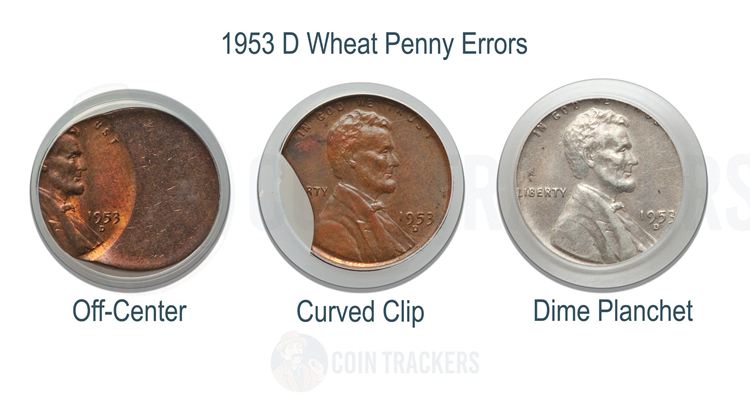
Photo: cointrackers
There’s something intriguing about an error coin. It’s a physical representation of a mistake, a human error that was made during the minting process. Perhaps the mint worker was having a bad day, or maybe there was a glitch in the machinery. Whatever the case, error coins are collector’s items, prized for their rarity and unique history.
1953 D Struck on Silver Dime Planchet Penny
In 1953, something very interesting happened at the US Mint. A small number of pennies were struck on silver dime planchets. They are highly prized by collectors and are worth at least $1000 each. While these error coins are extremely rare, they provide a fascinating glimpse into the behind-the-scenes workings of the US Mint.
But how does something like this happen? The explanation is actually quite simple. At the Mint, workers feed blanks (or “planchets”) into a machine that stamps them with the design of the coin. However, on rare occasions, a blank for one denomination can get mixed in with the blanks for another denomination. When this happens, a penny can be struck on a dime planchet-and vice versa.
1953 D Off-Center Lincoln Penny
How do off-center strike errors happen? Put simply, the die, which is used to stamp the image onto the coin, was not correctly aligned, resulting in an off-center strike. The value of the 1953 D off-center penny depends on how far off-center the strike is.
The most valuable examples can fetch hundreds of dollars at auction. The least valuable 1953 D off-center pennies are those that are only slightly off-center, with the strike running parallel to the coin’s edge. These coins typically sell for around $20.
1953 D Curved Clip Lincoln Penny
During the production process, a small piece of the metal planchet was cut out of the edge of the coin. As a result, the coin has a characteristic curved clip on one side. While it is not known exactly how this error occurred, it is believed that the planchet was restruck and then ran through the press again, resulting in the distinctive shape. Unfortunately, there are many fake versions of this coin in circulation, so collectors need to be careful when purchasing one.
1953 D Repunched Mint Mark Lincoln Penny
The 1953 D Repunched Mint Mark Lincoln Penny is a rare coin that is highly prized by collectors. This coin is special because the mint mark was accidentally stamped twice, creating an error. The value of this coin ranges from $50 to $450, depending on its condition. For coin collectors, the 1953 D Repunched Mint Mark Lincoln Penny is a must-have item. So, if you come across one of these rare pennies, be sure to hold on to it!
5 Most Valuable 1953 D Wheat Penny Ever Sold
| 5 Most Valuable 1953 D Wheat Penny | ||||
| No. | Type | Condition | Sold Date | Price |
| 1 | 1953-D Cent | MS67+ Red | Dec 15, 2022 | $6,000.00 |
| 2 | 1953-D 1C | MS67 Red | May 4, 2005 | $4,887.50 |
| 3 | 1953-D 1C | MS67 Red | Jun 2, 2005 | $4,600.00 |
| 4 | 1953-D 1C | MS67+ Red | Jul 15, 2022 | $4,560.00 |
| 5 | 1953-D 1C | MS67 Red | Sep 17, 2008 | $4,025.00 |
1. 1953-D Cent, MS67+ Red Sold on Dec 15, 2022 for: $6,000.00
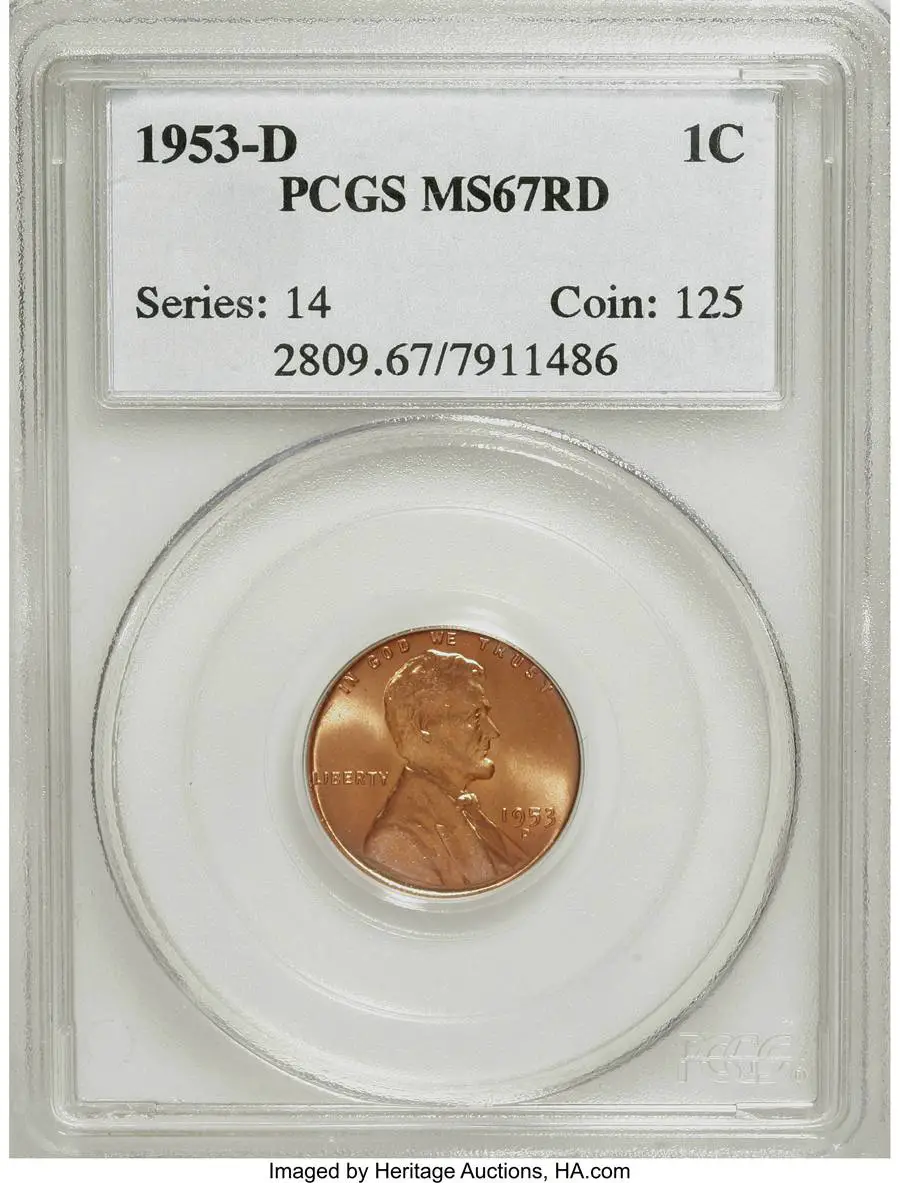
2. 1953-D 1C MS67 Red Sold on May 4, 2005 for: $4,887.50
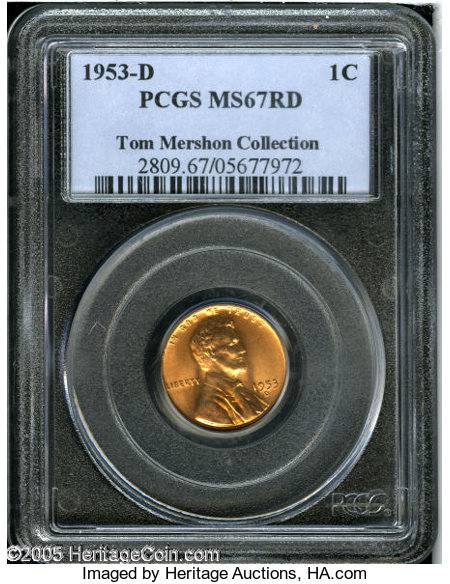
3. 1953-D 1C MS67 Red Sold on Jun 2, 2005 for: $4,600.00
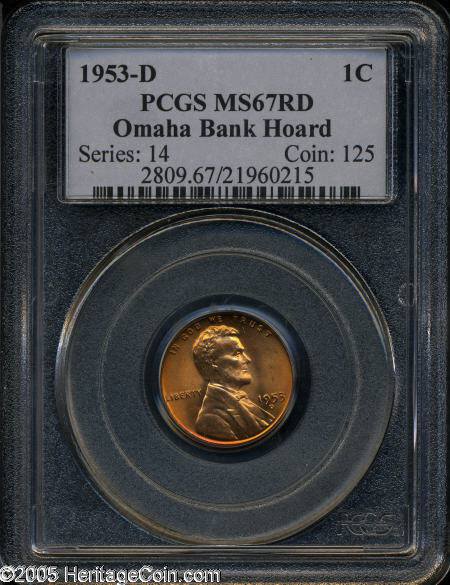
4. 1953-D 1C MS67+ Red Sold on Jul 15, 2022 for: $4,560.00
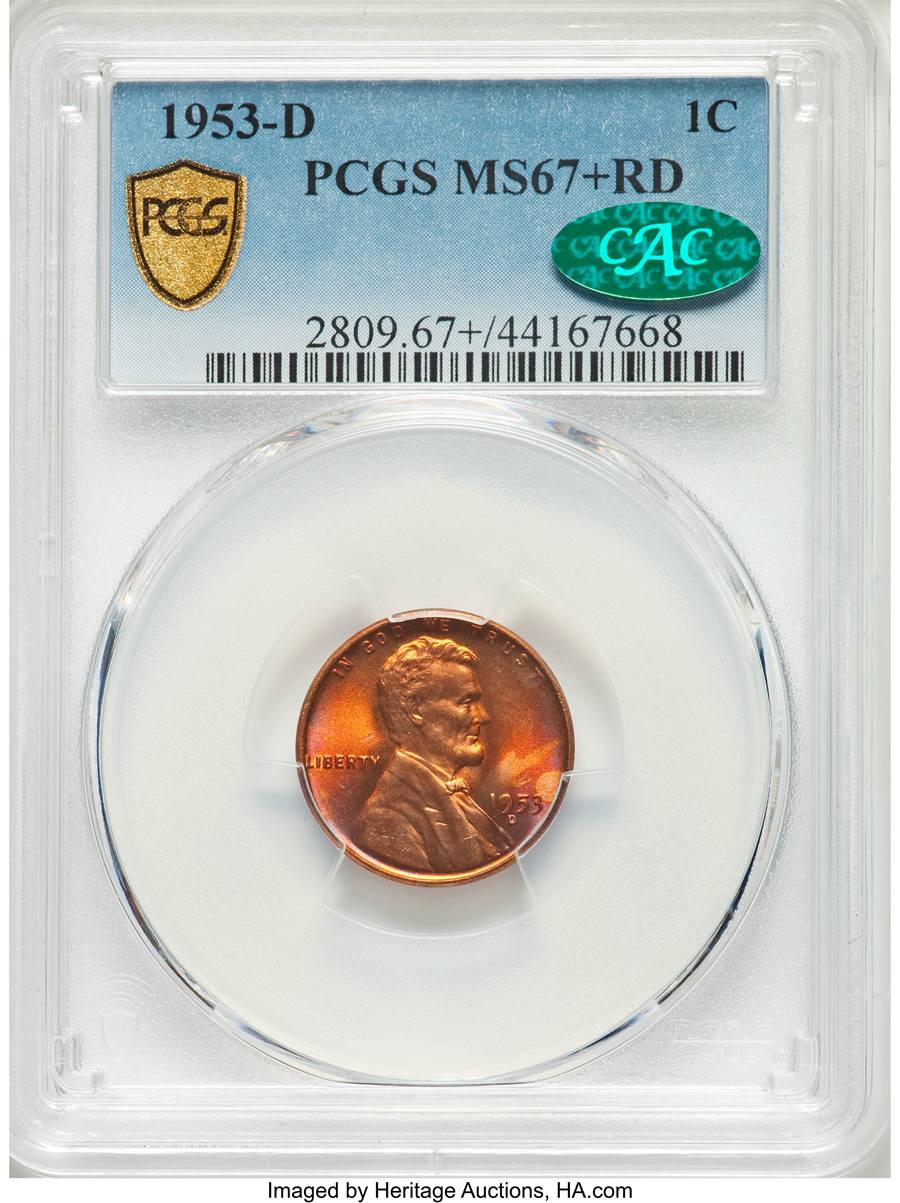
5. 1953-D 1C MS67 Red Sold on Sep 17, 2008 for: $4,025.00
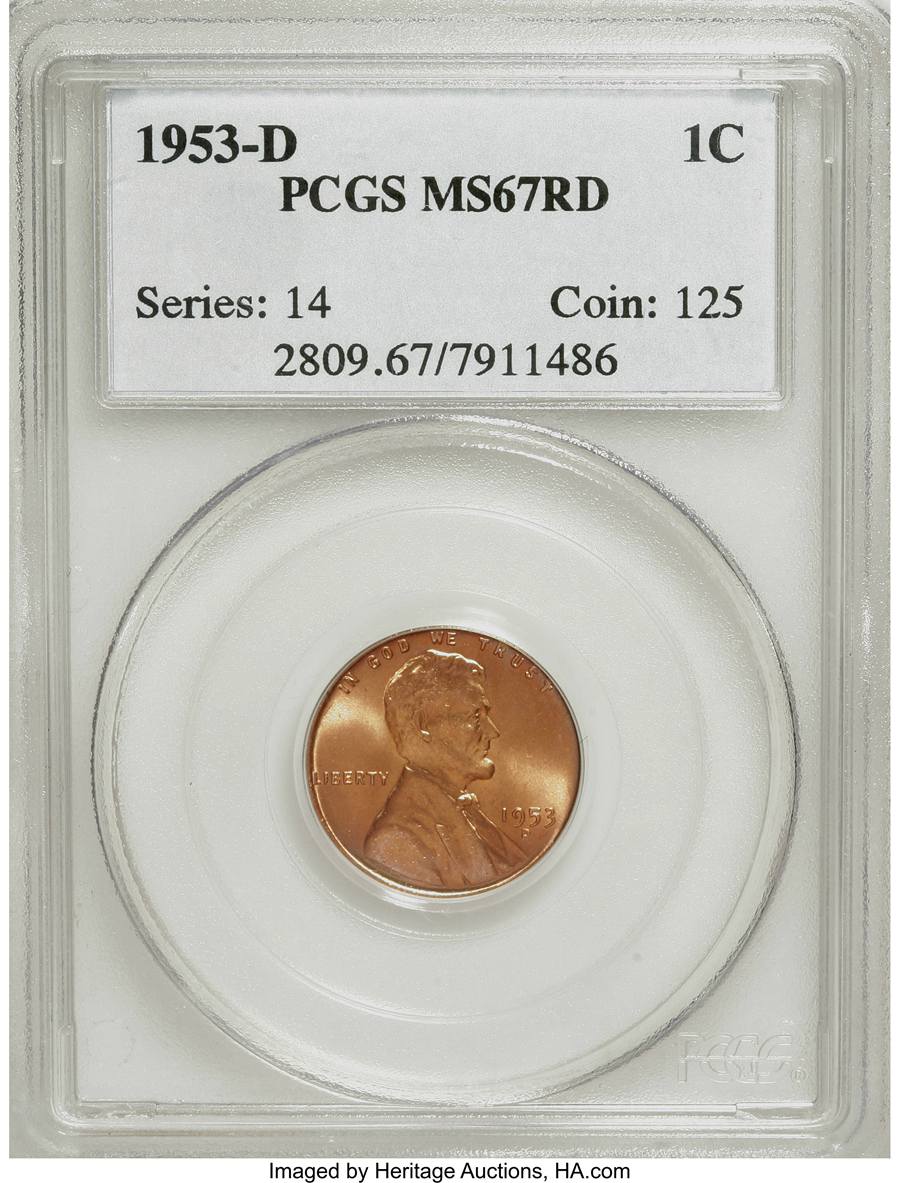
Final Thoughts
If you find a 1953 D penny, it can be worth quite a lot! In circulated condition, it can be worth between $0.05 and $0.22. However, if the coin is uncirculated, its value increases significantly, ranging from $2 to a whopping $64 – that’s a lot for a single penny! And some rare error varieties can be worth even more!
So, if you have a 1953 D penny that is in pristine condition, it could be worth a considerable amount of money. However, even if your coin is not in perfect condition, it is still an interesting piece of history that is definitely worth hanging onto. Who knows, it could be worth a lot more money one day!
